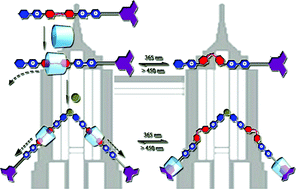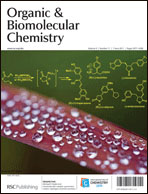The development and utilization of a new way to build molecular devices is of importance. To build a novel topology of interlocked molecular systems with a controllable mechanical motion, an axle-like compound comprising azobenzene and alkoxy isophthalate moieties was synthesized first. It would form a switchable hemi-rotaxane structure with α-cyclodextrin (α-CD) ring encapsulated in aqueous solution. Next, the hemi-rotaxane was reacted with ethylene diamine palladium nitrate (Pd(en)(NO3)2) and ethylene diamine platinum nitrate (Pt(en)(NO3)2), respectively, to quantitatively form two bis-branched molecular shuttles in situ. The bis-coordinated Pd(II) complex was formed quickly at room temperature, whereas the bis-coordinated Pt(II) one was effectively treated at 333 K but more stable than the former. In this case, transformation of ring shuttling direction could take place in the stable bis-branched Pt(II) complex. The steric effect of the co-stopper, namely the Pt(II) metal center, made the α-CD ring dynamically shuttle inwards to the alkoxy isophthalate station with the azobenzene's photoisomerization, rather than dethreading from the axle.

You have access to this article
 Please wait while we load your content...
Something went wrong. Try again?
Please wait while we load your content...
Something went wrong. Try again?


 Please wait while we load your content...
Please wait while we load your content...